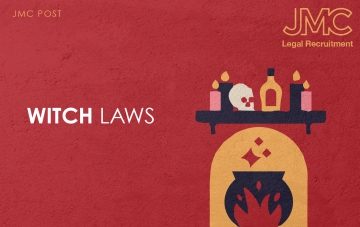
Witch Laws
05 Oct, 20223 Mins
Do you know much about England’s old witch laws?
Given its October, it seemed like the perfect time to delve into our legal history of witchcraft.
Witchcraft trials in England and Scotland peaked in the 15th to late 18th century to tackle perceived dark forces linked to the devil. In 1542, the Witchcraft Act was the first to make witchcraft a crime punishable by death.
Then in 1563 Act of Congregations, Enchantments and Witchcraft meant anyone caused to be killed by witchcraft punishable by death. A more merciful Act because prosecutors had to demonstrate someone had been hurt by witchcraft rather than just the person alleged had been practising rituals.
When James the First came to rule both England and Scotland, he was obsessed with witchcraft after being convinced a coven of 100 witches had capsized his boat. He wrote a book called ‘Demonology’ which became the basis of the 1604 Witchcraft Act. This time preventing torture to get confessions.
Witnesses were often unable to say they had seen witchcraft occurring, but what would be accepted was evidence in dreams and visions. Also, unlike other areas of law at the time, the evidence of children was allowed, as seen in the famous Pendle Witch trials which relied solely on testimony from 9-year-old Jennet Device.
Matthew Hopkins, the self-titled Witchfinder General and his inspectors were prolific witch-finders resulting in 300 executions in just a few years - more than 60% of the total number of witch executions.
Things changed with the passing of the 1735 a new Witchcraft Act. This didn’t criminalise people performing witchcraft, but people pretending to perform witchcraft. So more about fraud. It remained on the statute books all the way into the 20th century, replaced in 1951 by the Fraudulent Mediums Act.
Written by Jason Connolly




